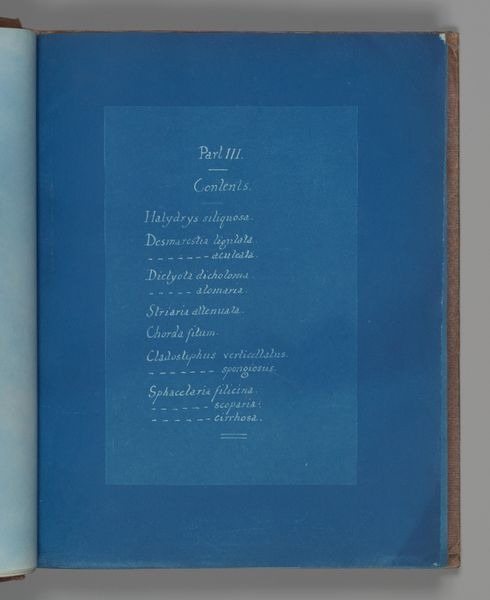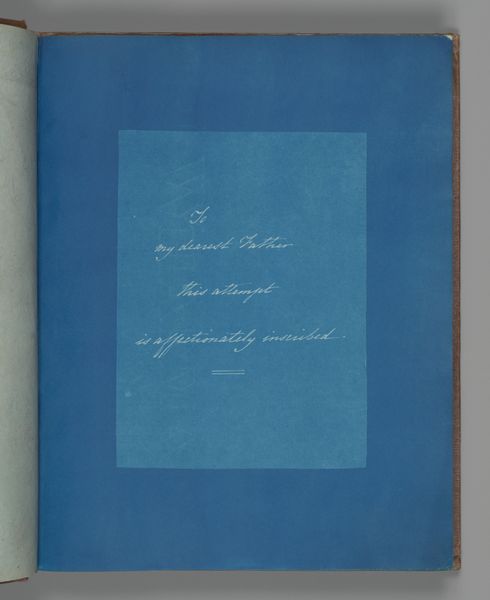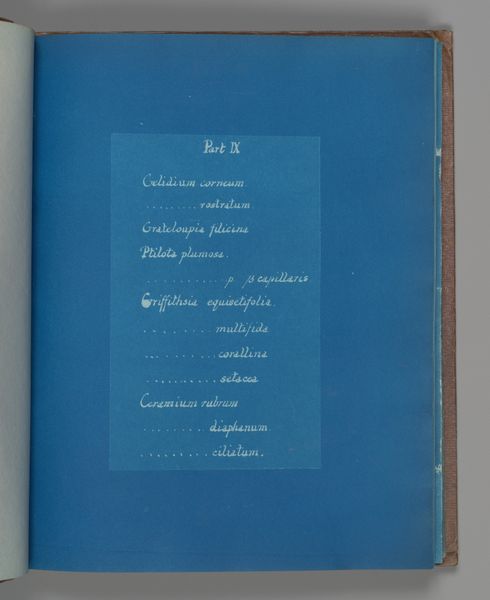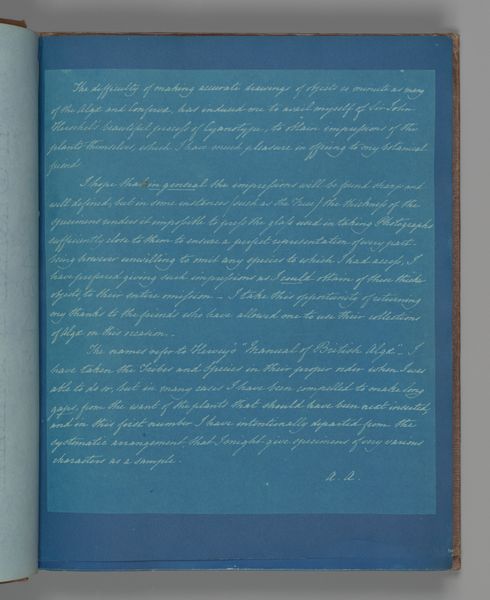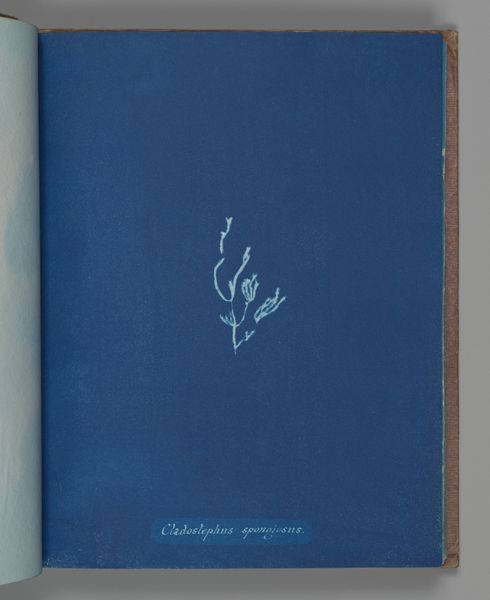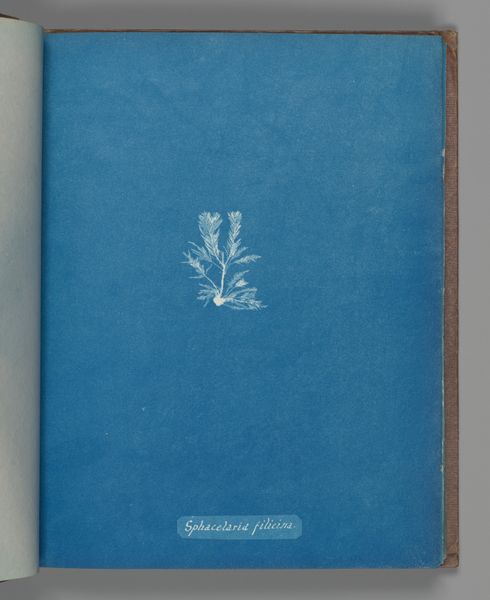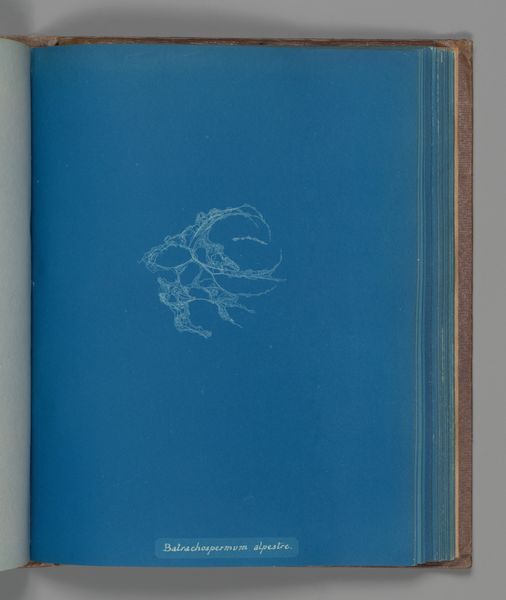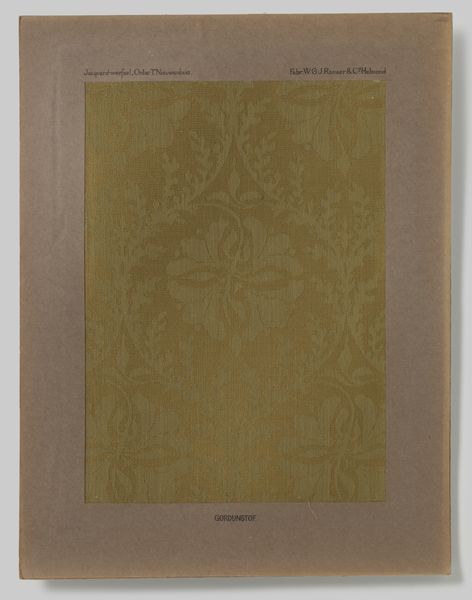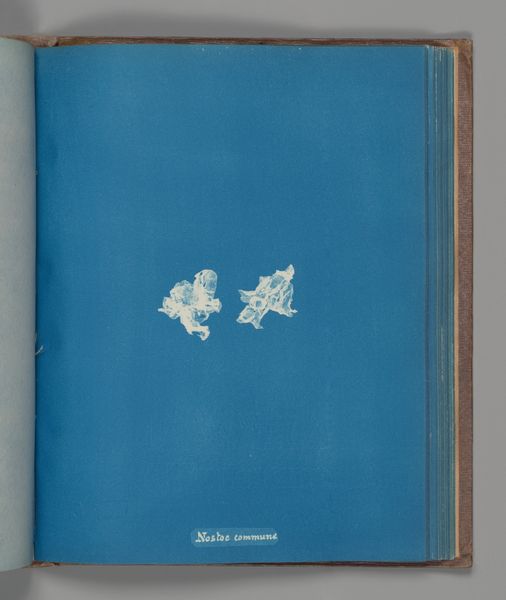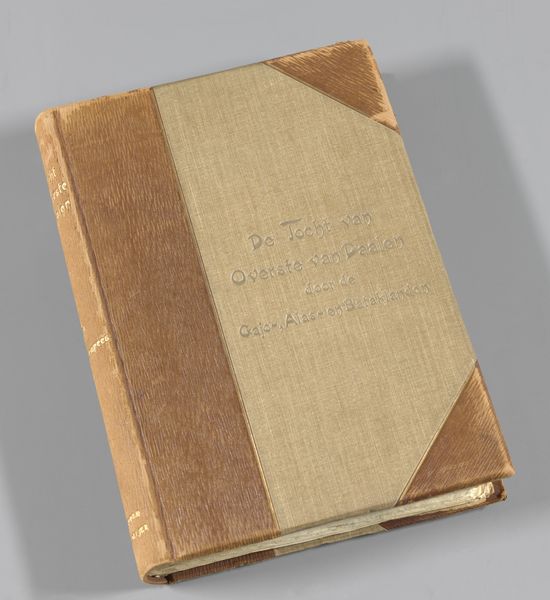
print, textile, paper, cyanotype, photography
#
still-life-photography
# print
#
book design
#
textile
#
personal journal design
#
paper
#
cyanotype
#
photography
#
publication design
Dimensions: Image: 25.3 x 20 cm (9 15/16 x 7 7/8 in.)
Copyright: Public Domain
Curator: Let’s examine “Part I Contents,” a cyanotype from Anna Atkins’ *Photographs of British Algae: Cyanotype Impressions*, created between 1851 and 1855. What strikes you immediately? Editor: It’s calming, almost dreamlike. The deep blue is mesmerizing. It feels simultaneously antique and surprisingly modern with the stark text against the saturated background. Curator: Indeed. Atkins, a botanist, created this album to document and disseminate knowledge of British algae using the cyanotype process, one of the earliest photographic techniques. Considering Victorian England's rigid gender roles, her endeavors challenge conventional expectations. This wasn't just scientific documentation; it was a subversive act of female intellectual agency. Editor: The intersection of science and art is so fascinating here. Was this about democratizing scientific knowledge? Was Atkins conscious of creating something aesthetically radical? It challenges how knowledge and visual culture operate, subverting expectations. Curator: Absolutely. Photography offered a way to directly index the natural world, a seemingly objective method that circumvented traditional artistic training largely inaccessible to women. But the cyanotype itself has its biases, privileging shapes and outlines. These aesthetic choices also need critical evaluation in any conversation on "scientific objectivity". Editor: Thinking about audience, was the primary reception among the Victorian scientific establishment, or a wider public fascinated with photographic novelty? That also plays into how "scientific" this work reads to contemporary viewers. Curator: Initially it circulated among a scientific network. Photography at the time had a contested place in visual culture. Museums shaped and also often resisted accepting photography as "art". Atkins, therefore, contributed both to scientific discourse and nascent photographic practices, pushing their institutional recognition and value. Editor: Thinking about it now, her book anticipates the potential of photo-based scientific and publication design. I hadn’t considered the lasting effects that someone like Atkins would continue to inspire and represent for future generations. Curator: She also demonstrated the power of photography to challenge the status quo. Her work encourages a re-evaluation of photographic history and the contributions of women to science and art. It makes you consider questions about intersectional politics and cultural history through visual practices.
Comments
No comments
Be the first to comment and join the conversation on the ultimate creative platform.
